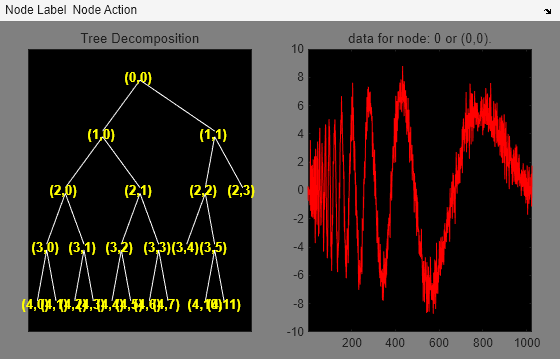besttree
Best tree wavelet packet analysis
Description
besttree is a one- or two-dimensional wavelet packet analysis
function that computes the optimal subtree of an initial tree with respect to an entropy type
criterion. The resulting tree may be much smaller than the initial one.
Examples
Input Arguments
Output Arguments
Algorithms
Consider the one-dimensional case. Starting with the root node, the best tree is calculated using the following scheme. A node N is split into two nodes N1 and N2 if and only if the sum of the entropy of N1 and N2 is lower than the entropy of N. This is a local criterion based only on the information available at the node N.
Several entropy type criteria can be used (see wenergy for more information). If the entropy function is an additive function
along the wavelet packet coefficients, this algorithm leads to the best tree.
Starting from an initial tree T and using the merging side of this algorithm, we obtain the best tree among all the binary subtrees of T.
References
[1] Coifman, R.R., and M.V. Wickerhauser. “Entropy-Based Algorithms for Best Basis Selection.” IEEE Transactions on Information Theory 38, no. 2 (March 1992): 713–18. https://doi.org/10.1109/18.119732.
[2] Mallat, Stéphane. “A Wavelet Tour of Signal Processing The Sparse Way.” Elsevier Science & Technology Books, 2009.
Version History
Introduced before R2006a
